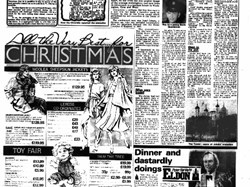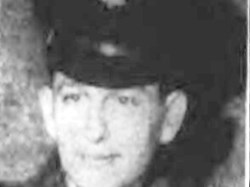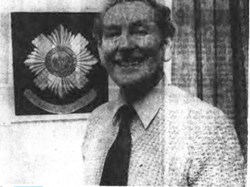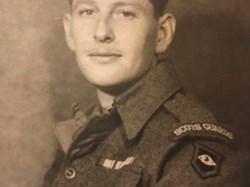Roy Harrison -A Firing Squad Soldier
A friend of the Society has told us about an interview Washington veteran, Roy Harrison, gave to the Newcastle Evening Chronicle in 1984, recounting his role in executing the German spy, Josef Jakob, in the Tower of London in 1941. The text of his fascinating story is reproduced below.
-------------------------------------------------------------------------------------------------------------------
Newcastle Evening Chronicle – Wednesday 7 November 1984
Safety Catches Off... Take aim... FIRE!
And so died a German spy
HE is a quiet, anonymous sort of chap today and even shamefacedly confesses to composing the odd poetic stanza about life, its purpose and direction.
He once made teacakes at a Team Valley factory until dismissed for asking for double-time for Sunday working. Apart from that, he has lived the low profile image of the average working man and now lives in retirement in a terraced house, house in Washington, Tyne and Wear.
Anonymous – perhaps. But Roy Harrison is a man who has made a macabre mark on history: he was on the firing squad which performed the last execution at the Tower of London. The condemned man was Josef Jakob, a German spy, who was arrested immediately after his parachute descent into the Home Counties of England in 1941.
The executioner: Roy Harrison, then a young Scots Guardsman, one of six marksmen who were called one day to perform "special duties - and found themselves facing a live target.
It happened on the morning of August 14, 1941, and Roy often thinks about it. Only now, with the covers off the official secrets of the time, has he decided to talk about it.
Nothing he was ever called upon to perform as a wartime elite soldier would ever match that bizarre moment when he and his fellow guardsmen were ordered to shoot Josef Jakob.
Rifles were loaded
His duties had led him to sentry duty at Buckingham Palace; he guarded and fed Rudolph Hess during the Deputy Fuhrers incarceration in the Tower; he fought in the Western Desert and was wounded at Salerno.
But it is the execution of a spy who went proudly to his death that Roy Harrison dwells upon today in moments of introspection.
"Two of our party were later killed in Italy at Casino and I was twice wounded. Were we getting paid back he wonders….
He adds. "I have never forgotten it. I was Just 21 at the lime and very impressionable. 1 had won my special proficiency for rifle shooting and was considered a crack shot.”
"Without any warning I, along with the others, was marched down to the armourers shop one morning and Issued with a short Lee Enfield rifle that was already loaded. We were than marched down to the miniature rifle range along the wharf.
"None of us had the slightest idea what we were going to do.”
"We were taken inside to the 25 yards line and given a spaced position in line and then ordered to adopt the kneeling position. Our sergeant informed us that not a sound should be made. We would be signalled to remove the safety catch and, after taking aim, wait for the signal to fire.
The nest thing we knew, a senior medical officer and a corporal called Purvis- he worked in the medical bunk because he was nearly seven feet tall- came in at the far end of the range bringing with them a chair – and Josef Jakobs. “He was blindfolded and had a piece of white lint over is heart He looked very proud and did not show the slightest sign of fear….”
Subsequent events were quick he recalls.
“We lads were really dumbfounded but with the strict training we had received. we acted as ordered he says.
"Jakobs, still showing no signs of fear, was offered the seat and accepted it (he had broken his leg during his abortive parachute descent)."
And then came the signal. "Release safety catch . . . take aim...FIRE!"
Josef Jakobs slumped forward on the chair, dead.
Even within the context of wartime censorship, the execution made front news the following day.
The Evening Chronicle reported: Jakobs had been “dropped” in the Home Counties.
When arrested he had with him a radio transmitter. a "large sum of British money" and food including "an ample supply of sausage." He also carried a spade with which to bury his parachute.
Went to the pub
Jakob had been sentenced to death at a general court martial, held In secret, and had revealed that he was a non-commissioned officer with the German meteorological service. Born in Luxembourg, he was 44 and the fifth to be executed since the outbreak of war.
Roy Harrison and his fellow soldiers of the firing squad knew none of this as they trooped away from the firing range on that morning of August 14, 1941.
The body was whipped away to the medical bunk. “We were ordered to apply safety catches and marched straight back to the armourer’s shop. The rifles were handed in and unloaded.
"We were then informed that only one rifle had the live round. The others having been loaded with a ballistic charge, which gave the equivalent 'kick' of a live round." he said.
"If it was true, nobody really knows who killed Jakobs - but the uncertainty is still in my mind."
The party, he recalls. was sworn never to tell colleagues the nature of their "special duty" that day and were given the remainder of the day off They went en-bloc to the Red Lion pub, Aldwich.
"Even the armourer did not know which man had been given the killer rifle. I remember that Cpl. Purvis, the medic, kept the belt of Jakobs coat, with his 'signature' on it." says Roy.
How does he view his role in the retrospect of the years?
"I have thought about it a lot The unfair thing was the way in which we were ordered to do the job without any warning.' None of us had any idea until that moment when the man was marched before us and we ware ordered to fire." he says.
He is also left with that discomforting thought posed by the subsequent fate of the firing squad. Two killed in action, himself wounded in action, the whereabouts of the others unknown to him.
Did fate really strike back, he wonders?
-------------------------------------------------------------------------------------------------------
Since publishing this article we have been contacted by Josef's granddaughter, Dr Giselle Jakobs, who has been researching her grandfather's life for over 30 years. She has a written well received book on his life The Spy in the Tower: The Untold Story of Joseph Jakobs, the Last Person to be Executed in the Tower of London (http://www.josefjakobs.com/ - available from Amazon), and has an extensive blog on him and related military and legal matters https://www.josefjakobs.info/
She would be very interested in any reader who knows of Roy Harrison and his life in the North East. She can be contacted through her blog, or through the History Society.
She has kindly agreed to allowing the society to a short biography of Josef Jakobs taken from her blog.
The Life of Josef Jakobs 1898 to 1941
Josef Jakobs was born in 1898 in Luxembourg, and moved to Berlin with his German parents in the early 1900s. He served in World War One and was wounded in 1918. After the war he trained and practiced as a dentist. He married a fellow dentist and had three children; two boys and a girl.
In 1934 he was convicted of counterfeit gold-making in Switzerland and imprisoned for two and a half years. Back in Germany he became a traveling salesman, but in 1938 got involved in supplying black market passports to escaping Jews. Convicted again Josef was sent to Sachsenhausen Concentration Camp, but he was released in March 1940.
He was joined the Abwehr (the German Army) and was sent to The Hague in the Netherlands to be trained in wireless transmitting and receiving.
On 31 January 1941, he took off from Schipol Airport, near Amsterdam, for England in a German bomber. Josef left the aircraft at approximately 8:30 pm but broke his ankle during his exit through the narrow hatch and on landing.
The next morning he was found by two farm hands. In Josef's possession was £497 in £1 notes, a wireless radio transmitter/receiver, a torch, two identity cards (one in the name of James Rymer), a ration book, several mystery tablets (possibly for use as secret writing materials), a flashlight, a German-English dictionary, a touring map of Great Britain, 2.5 pounds of chocolate and smoking accessories.
After several interrogations by MI5 and hospital treatment, Josef was charged under the Treachery Act (1940), and tried by General Court Martial at the Duke of York's Headquarters in Chelsea on August 4th and 5th. Found guilty and sentenced to death, he was incarcerated in Wandsworth Prison.
Josef was executed on 15 August (not the 14th as Roy recalled) and his body buried in an unmarked grave in a common plot of the cemetery of nearby St. Mary's Roman Catholic Cemetery.
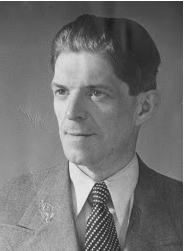
We have also been contacted by Steven White, the great nephew of Roy, who has kindly supplied us with details of Roy's life in Washington, and wartime photographs.
The Life of Wheldon Roy Harrison 1920 to 1991
Wheldon Roy Harrison was born in April 1920 in Longton, near Preston, Lancashire. Between the ages of 16 and 18 he was a merchant seaman, and also served in the territorial army for a year.
In 1940 he joined the Scots Guards where he was primarily a cook. After his time at the Tower of London he was posted to both North Africa and Italy, where he was wounded at Salerno.
In 1944 Roy married Edith Watt Hall of New Washington, in Usworth Holy Trinity Church, and together moved into the family home on The Drive Usworth before moving to Spout Lane, Washington.
Roy worked for Newalls Chemicals, then became the gardener/ handyman for the pit manager of Usworth Colliery, before working in a Team Valley bakery.
Tragedy hit them in November 1963 when their only son, 16 year old William Weldon (aka Billy) was washed off Roker Pier by heavy sea’s whilst fishing.
Roy passed away in 1999, and Edith in 2011, aged 90.
